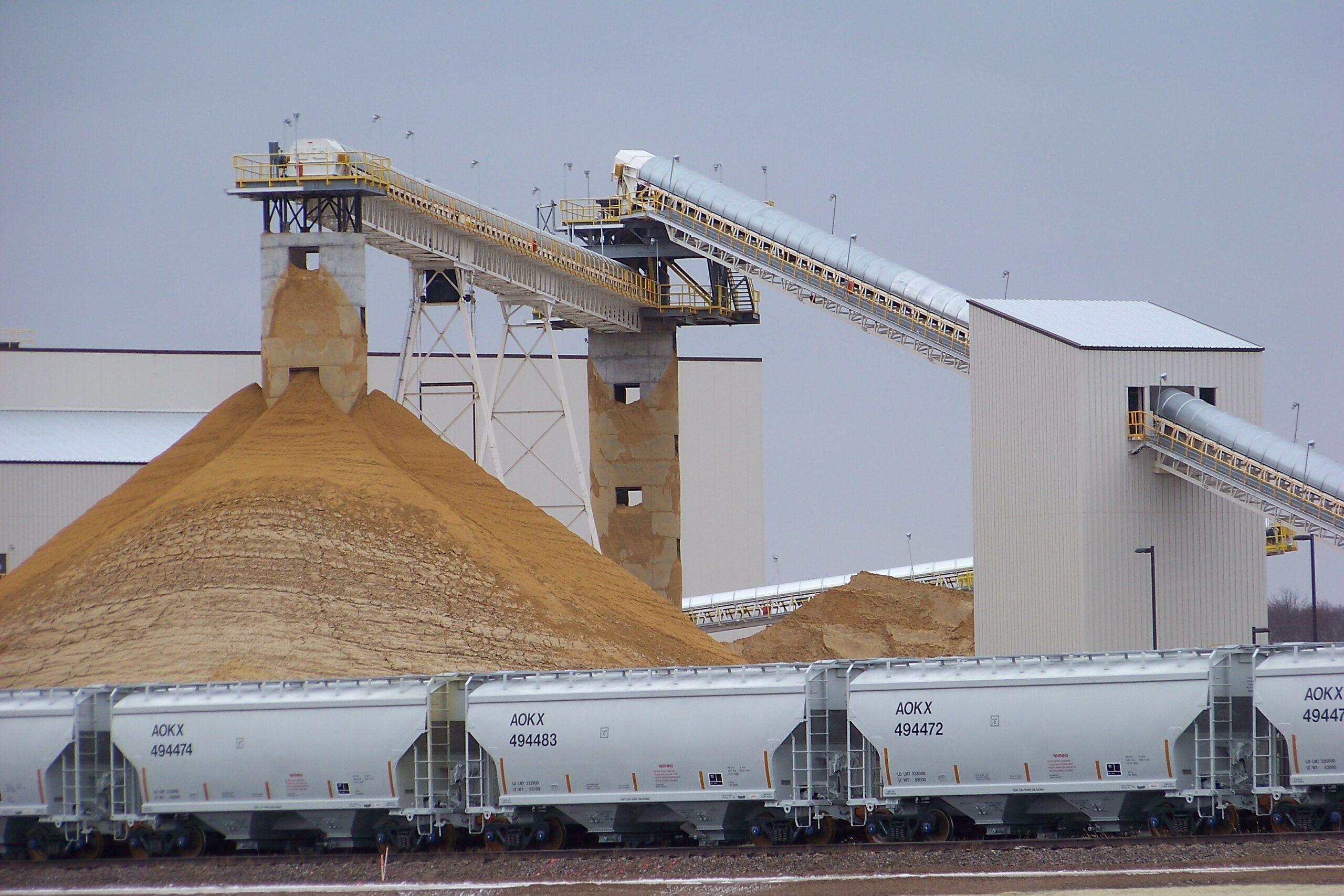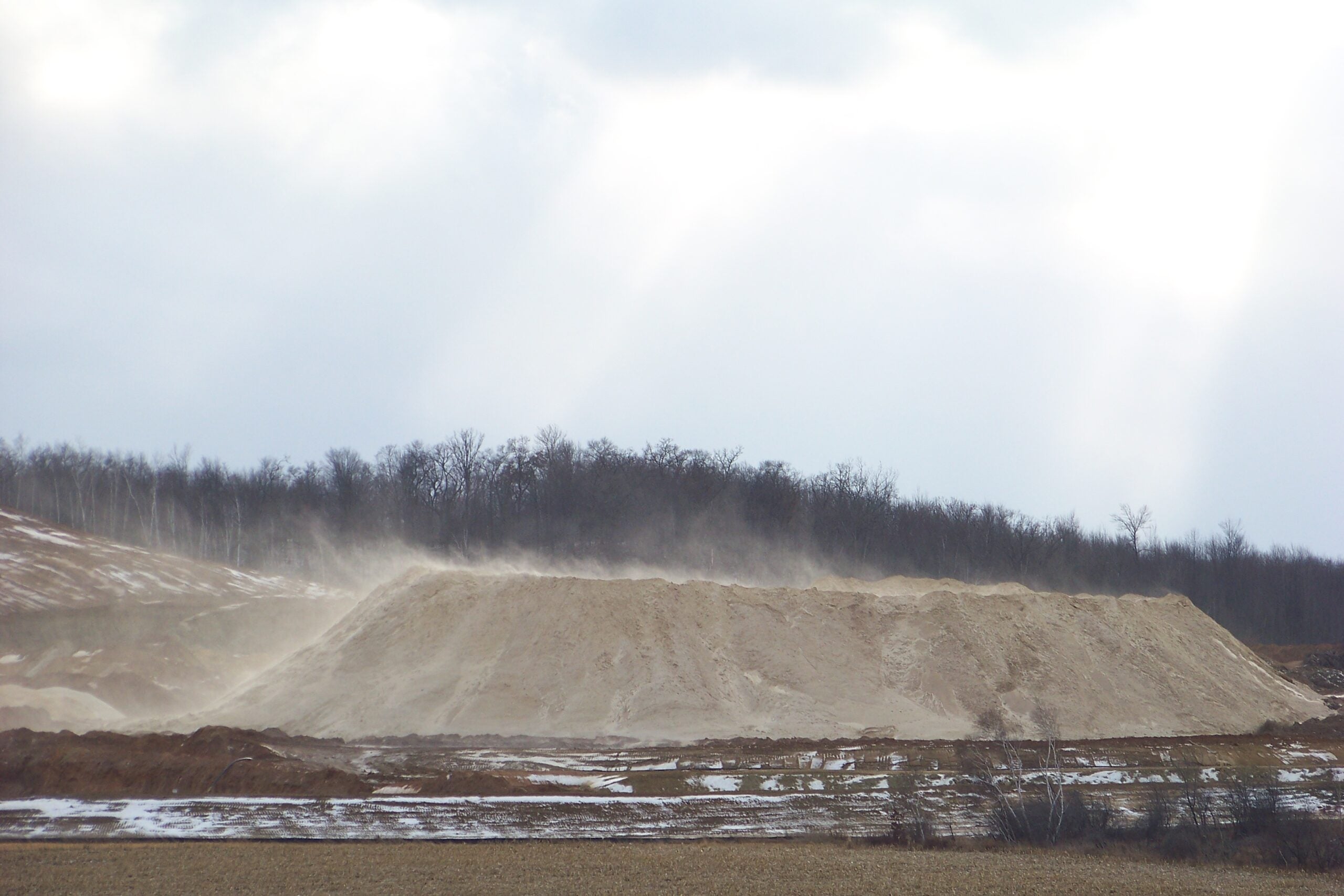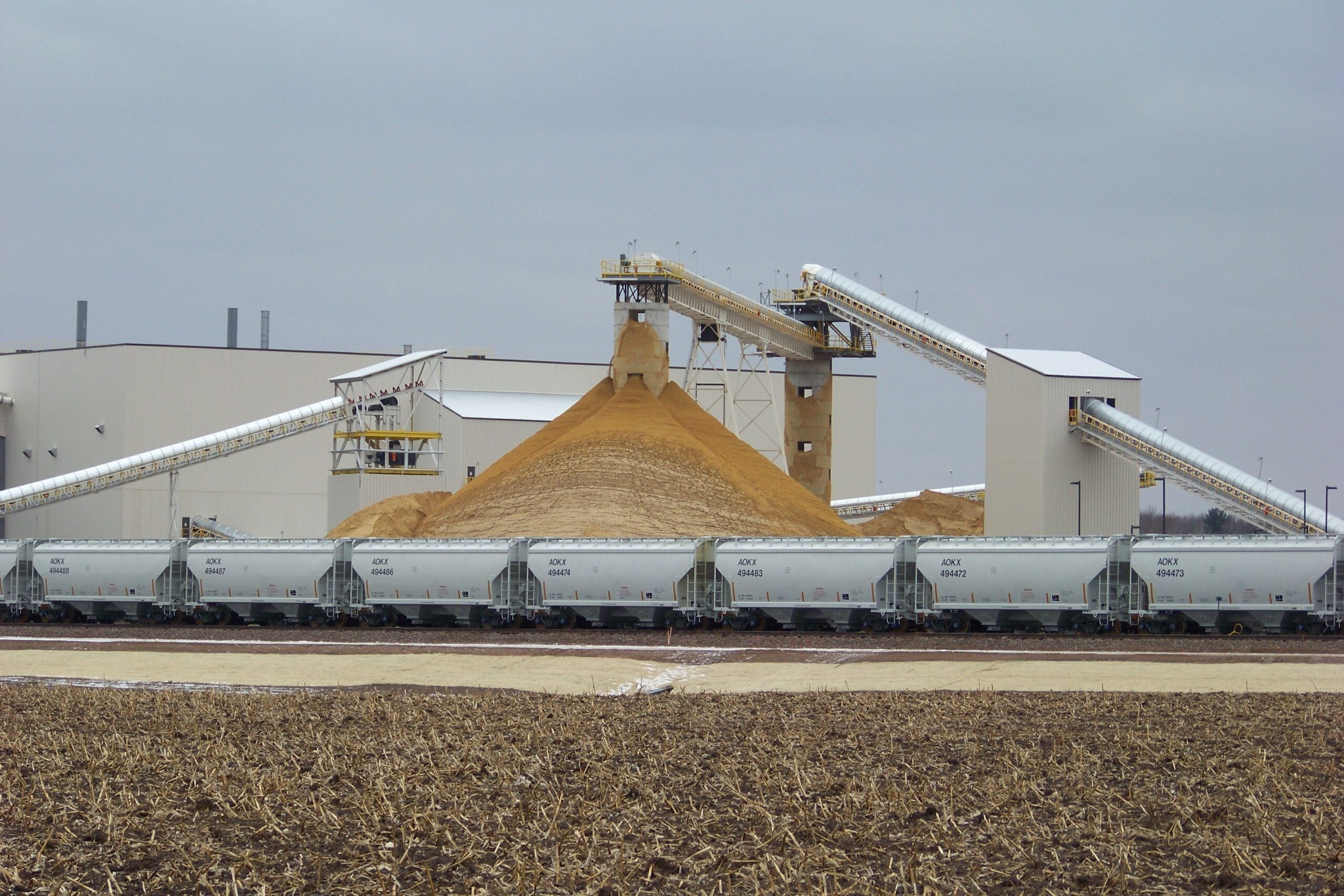A frac sand producer with four mines in Wisconsin announced it expects to declare bankruptcy after posting net negative revenues in the first quarter of 2020 and defaulting on loans.
Hi-Crush Inc., which owns mines in the cities of Augusta, Whitehall, Blair and Wyeville, issued a press release June 25 stating it took in just more than $146 million in revenues in January, February and March. But during that same time, the company posted a net loss of nearly $147 million. The company also announced it had defaulted on loans.
Of its four mines, Hi-Crush reported that only its Wyeville facility was still operating.
News with a little more humanity
WPR’s “Wisconsin Today” newsletter keeps you connected to the state you love without feeling overwhelmed. No paywall. No agenda. No corporate filter.
Over the past two years, Wisconsin frac sand mines producing what is known within the industry as “northern white” sand have faced increased competition from what are known as “in-basin” sand producers in states like Texas. In-basin means the sand is mined, processed and shipped from locations near active oil fields.
In its announcement, Hi-Crush stated that during the first quarter of 2020 the entire U.S. oil and natural gas industry “faced a sharp and rapid decline.” It stated the decline was driven by depressed oil prices and less drilling activity due to “decisions made by the Organization of Petroleum Exporting Countries and other oil producing nations, and impacts to the demand for crude oil associated with the emerging COVID-19 pandemic.”
In response to the industry-wide slowdown, Hi-Crush said it has reduced its workforce by around 60 percent since mid-March, lowered planned expenditures for the rest of the year by 40 percent and idled three production facilities and three terminal facilities where sand is loaded onto trucks headed for oil or gas wells.
Thomas Jacob, vice president of oil and natural gas analytics firm Rystad Energy, said the COVID-19 pandemic and resulting economic downturn has affected all national producers of frac sand, but Wisconsin-based mines are dealing with a “double whammy” as in-basin mines take a large percentage of the market share.
This year, Rystad projects total demand for frac sand will reach nearly 59 million tons. Of that, the firm predicts nearly 24 million tons will come from Wisconsin mines. Rystad figures from 2018 show total demand for sand was around 200 million tons, with more than half of that coming from Wisconsin.
As a result, Jacob said Wisconsin can expect to see more mines idling or shutting down completely.
“So, everything baked in, we think around 30 to 40 percent of northern white sand mines don’t come back, assuming adoption rates stay the same,” Jacob said.
That said, Jacob doesn’t equate a bankruptcy filing with the end of a producer like Hi-Crush.
“I would say they’re probably in the lower end of the cost spectrum when it comes to operating costs and best practices and all of that. So, they’re definitely a very lean operation. So as the market bounces back up, I don’t see why they wouldn’t be able to get those lines back,” he said.
Hi-Crush’s mining and processing facility located between the cities of Whitehall and Independence has drawn criticism from some local residents since it opened in May 2014.
That year, the property was annexed by the cities of Independence and Whitehall, which allowed the company to avoid Trempealeau County rules limiting its hours of operation. The annexation by Independence led to a lawsuit brought by the neighboring the town of Lincoln, which argued the move was illegal because the mine property was not touching any part of the city’s boundary. Instead, the Independence City Council annexed consecutive narrow strips of land through another town to get to Hi-Crush.
The lawsuit was settled in 2015 after Independence agreed not to annex any other frac sand mines for 20 years.
In 2018, the Hi-Crush Whitehall mine released 10 million gallons of muddy water and fine sediment from a holding pond used in the sand-washing process to rescue a contract worker who became trapped under 10 feet of turbid water after his bulldozer slid into the pond. The water and mud traveled into a creek and ultimately turned the Trempealeau River a bright tan and orange color for more than a day. Tests conducted by the Wisconsin Department of Natural Resources showed the water and sediment contained high concentrations of heavy metals like arsenic, copper and lead. The metals are naturally occurring in the sandstone used to produce frac sand but become concentrated in holding ponds.
The DNR didn’t issue any citations to Hi-Crush, citing a statute allowing wastewater discharges in order to save a life.
Hi-Crush wouldn’t be the first large-scale frac sand company in Wisconsin to file for federal bankruptcy protections. Emerge Energy, which owned Superior Silica Sands, filed bankruptcy in July 2019 after declaring it owed more than $338 million to lenders and contracting companies around the country. On June 29, Covia Holdings, which owns mines in Minnesota and Wisconsin also filed for Chapter 11 bankruptcy protections.
Wisconsin Public Radio, © Copyright 2025, Board of Regents of the University of Wisconsin System and Wisconsin Educational Communications Board.




